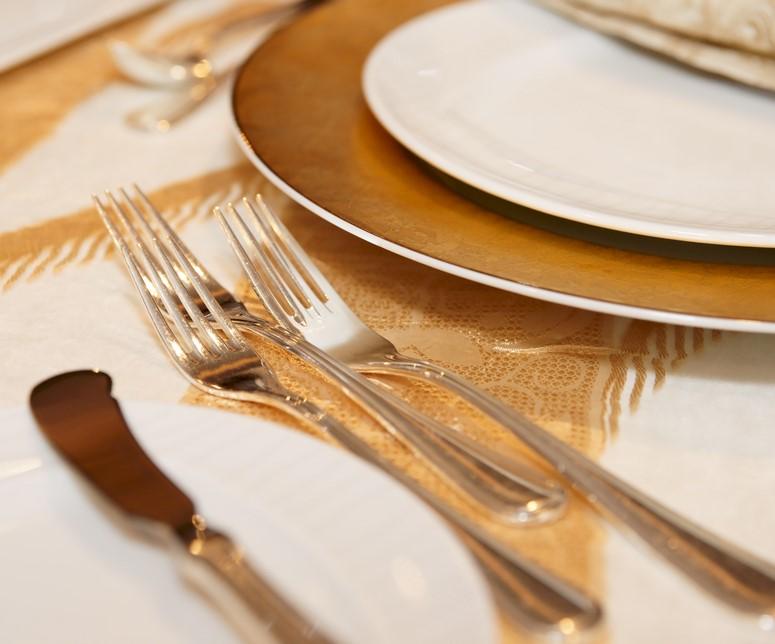My Fork or my Hands?
By: Janet Adetu Date: 6 years agoComment: 0 Category: Articles
We all love the opportunity to dine out whether it is in a restaurant or at an event. It is so much fun eating in the right ambience, with the right people, in the right mood, this sets the tone for a great time out. We are now in the festive season with numerous Christmas weddings, parties and dinner. This is the time where you will likely indulge yourself in eating all sorts of assorted to test. Some people like to play safe and eat only what they are familiar with. As much as that sends sensible, where is the fun and what experience would you have had if you are not adventurous enough to try something new. No matter the event many people tend to go for their favorite dish when asked, unless the dish looks so attractive.
How safe do you play when you are out dining? Do you use your imaginary fork or would you use your hand? You have just been served your favorite traditional delicacy. To enjoy the meal to its fullest, instinctively you want to ask to wash your hands and get right into the meal. Are you right to use your hands or would you request for a knife and fork?
Using etiquette to your advantage would mean don’t think twice, you ought to use you fork of course. Some others may argue that no matter where, they are going to divulge that meal the way they know best; with their hands. The real challenge is not in the method of how you complete that meal but the desire not to embarrass yourself from dripping oils and other unforeseen circumstances when you start eating. The truth really is in order to have a competitive advantage; it is a case of assessing your environment, the people you are with, others in your vicinity and the occurrence of the day.
Do you know how to navigate the tools of the table?
As a professional in the course of your career and as you climb up the corporate ladder you may have many opportunities to experience fine dining. This is an important area where you exhibit your executive presence, your interpersonal skills and your ability to engage in good networking skills. Maintain rapport with those around you and tap into building acqintances and future …..
Navigating the tools of the table is a skill that is learnt over night if you are willing. It is not to be taken for granted when it matters most because at this point any form of breach of etiquette can easily tarnish your image.
Once again imagine an executive dunking bread in his soup at a formal gathering, instantly that executive sabotages his image negatively and leaves an impression of being unpolished.
Such scenarios are to watch how others conduct themselves. If it looks sensible follow suit. Today many organizations are realizing the need and importance of fine dining experience to measure your judge of character and managerial decision abilities.
The whole idea is to see how you conduct yourself accordingly among a group of people. How do you create an impression that is acceptable among the people you are with? Do you present yourself in an approachable manner enough for others to genuinely want to do business or engage in a relationship with you.
Simply put once you are seated you will see an army of cutlery on the table from knives, forks to spoon.
Do you know the correct tool to use from start to finish?
It does not matter whether you are left handed; your knife stays in your right hand while your fork stays in your left hand. Exceptions to this are when you decide to dine American Style, so then you switch your fork to the right hand to eat but once again to the left when you need to cut your food.
It still baffles me when some people would rather not pick up the knife and settle for the use of fork only. It is because it is easier and more comfortable to use. Does the formal environment not bother them? Could it be that they are just not bothered.
In the ideal situation your small fork is used for salad and the large fork for your entrée while the smallest fork is for your dessert. Under no circumstance will you use your hand during any of these stages.
Your fork represents the major dining tool supported by the knife. Use your small knife for starter, your big knife for the main meal and the smallest knife to butter your bread.
… this all sends a little …. For a formal dining tutorial and practicing this yourself. Let us create your Panache Advantage. Cutleries can never be forgotten or misplaced but make the right judgment call that is comfortable and acceptable.
Remember again the best of a man’s polish or Panache is in the way he dines. Use protocol and etiquette to stand out from the crowd.
TIPS ON HOW TO EAT AWKWARD FOODS
- Mango - Cut in half, eat out of skin with spoon
- Spaghetti - use fork against plate
- Lobster - Both Knife and Fork
- Shrimp - Cocktail Fork
- Salad - Knife and Fork
- Pizza - Thin crust: Fingers, Thick crust: Knife and Fork
- Crepes - Secure with Fork, eat with spoon
- Chicken/Buffalo wings - Finger foods with fingers
- … - Finger foods with fingers
- Bread Roll - Broken & Eaten with Fingers
Bon Apetite
